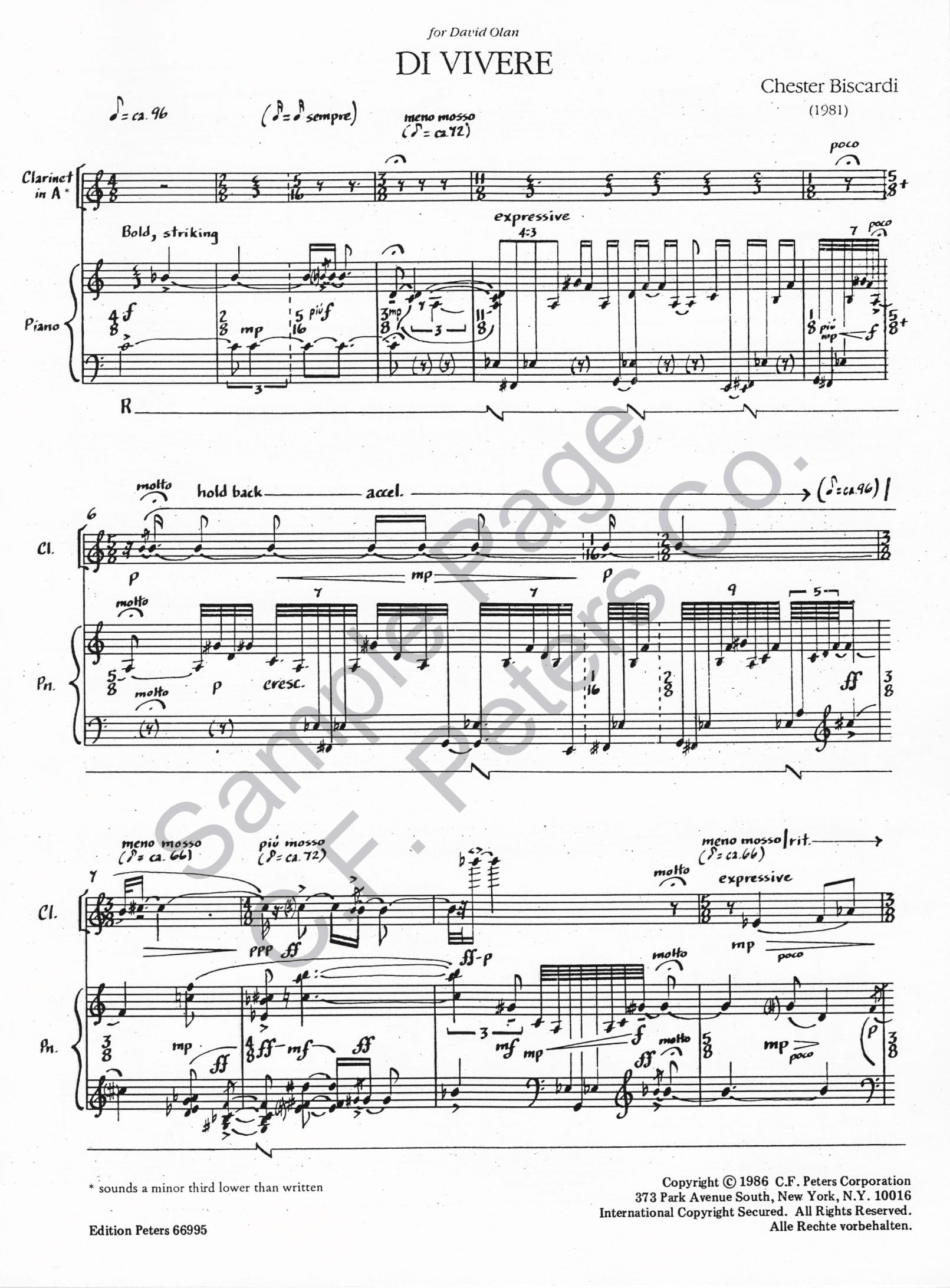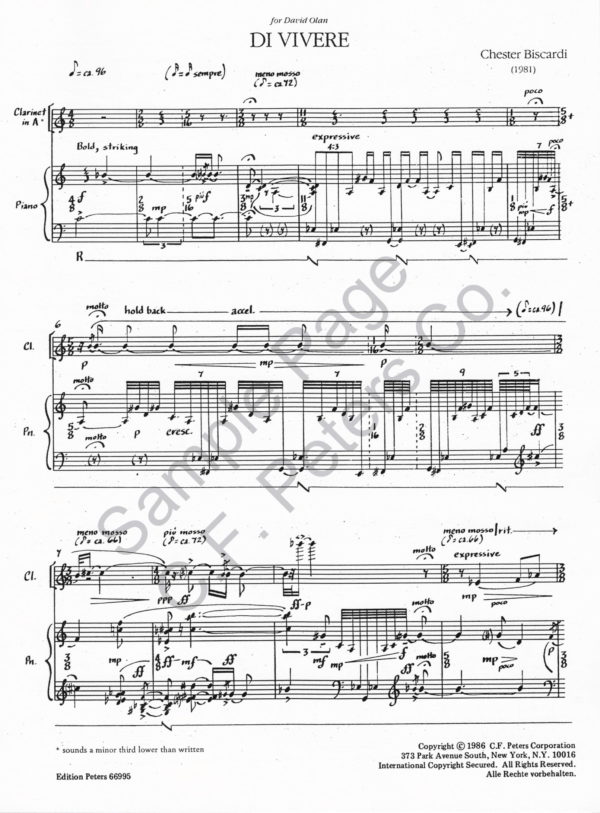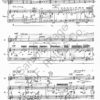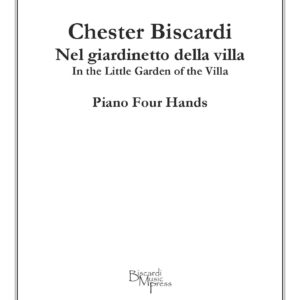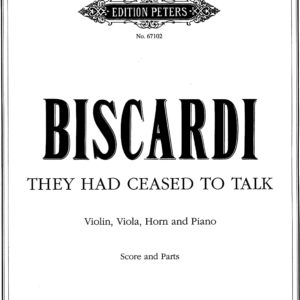Description
Audio
Da Capo Chamber Players

This recording appears on Chester Biscardi: In Time's Unfolding, Naxos 8.559639 (Hong Kong, 2011) with In Time's Unfolding, Tartini, Piano Quintet, Mestiere, The Viola Had Suddenly Become a Voice, and Companion Piece (for Morton Feldman). Liner notes by the composer.
Premiere
World Premiere: 18 April 1982
Da Capo Players (Jerry Kirkbride, Joan Tower, Patricia Spencer, Joel Lister, Andre Emelianoff)
Da Camera Society of Mt. St. Mary's College
Los Angeles, CA
New York City Premiere: 17 May 1982
Da Capo Chamber Players
Carnegie Recital Hall
New York, NY
Dedication
to David Olan
Commissioner
Written for the Da Capo Chamber Players under a National Endowment for the Arts Composer / Librettist Grant, 1980-1981
Publisher
C. F. Peters score: No. P66995;
parts: No. P66995a
Program Notes
Di Vivere, for clarinet in A and piano, with flute, violin and violoncello (1981), was commissioned by the Da Capo Chamber Players for their “Connections with the Past” series at Carnegie Recital Hall and is dedicated to my friend, David Olan, composer and clarinetist. Although self-contained, it continues the contrasting sonorities found in Mestiere, for piano (1979), and completes the title of Cesare Pavese’s collected journals, Il mestiere di vivere, The Business of Living. In a single movement it explores both the inward and outward directed music of the clarinet and piano, heightened and further exteriorized by the coloration of a trio of flute, violin and ‘cello.
During the writing of this work I took a trip to Mexico where I discovered the paintings of Rufino Tamayo and how they reflect Aztec fresco colors – green, yellow, red, white, and black. Like literary images, color and visual shapes also influence my work as in Piano Sonata and as here in Di Vivere. I wrote the following in my personal journal on January 13, 1981 that makes the connection between color and harmony and the inner-outer directed nature of this work: “I was impressed today in a yoga class by how I feel so isolated while doing certain positions – very personal – but then all of a sudden I straighten up, turn my head to the side, and realize that there is a larger world, more expansive, brighter than just my own warmth and my own presence. And then back to that inner world. It is the isolated world of the clarinet and piano being enhanced by the trio of flute, violin and ‘cello. Here the difference, too subtle, between the Aztec and Tamayo’s coloration. How do I shade these different harmonies?”
Originally, Da Capo requested a work for clarinet and piano. I found that to be a daunting idea and became creatively blocked because of it. So I went to complain to Morton Feldman who I had first met in Buffalo in 1979: “It’s difficult to write for two instruments.” To which he responded: “Think of the piano and clarinet; add horn (then take it out); add violin, pizz. (then take it out), etc. Arrive at piano and clarinet!” His advice to me was akin to a Japanese aesthetic that suggests that one should remove everything unessential in order to strengthen a work of art. So, I “added” the flute, violin and ‘cello as a way of “pulling” the colors out of the clarinet and piano duo, and they became permanent residents. But the work is structured in such a way that it could be performed as simply a duet for clarinet and piano.
Di Vivere may be performed together with Mestiere. Di Vivere may be performed as a quintet or a duet for clarinet in A and piano.
The quintet, the duet or the piano solo may be performed individually or in one of the following combinations:
I. Di Vivere duet and quintet
II. Mestiere and Di Vivere duet and quintet
III. Mestiere and Di Vivere quintet
IV. Mestiere and Di Vivere duet



